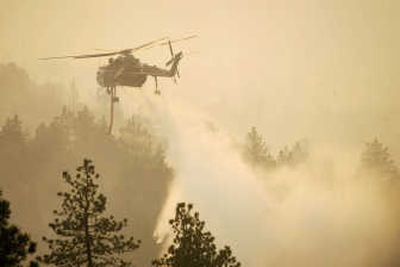Wildfires emit tons of carbon dioxide

WASHINGTON – In one week, Southern California’s wildfires spewed as much carbon dioxide – the primary global warming gas – as the state’s power plants and vehicles do in a week, scientists figure.
A new study by two Colorado researchers shows that U.S. wildfires pump a significant amount of the greenhouse gas into the air each year, more than the state of Pennsylvania does. It raises questions about how useful it is to plant trees to offset rising carbon dioxide emissions and soothe environmental consciences.
Because the California wildfires occurred just as the study was about to be published, the researchers calculated how much carbon dioxide was likely to come from the devastating blazes Oct. 19-26. It’s a lot: 8.7 million tons.
That’s more than the state of Vermont produces in a year. And it’s also more than the 6 million tons estimated by California’s air control agency, which used a different calculation method.
On average, wildfires in the United States each year pump 322 million tons of carbon dioxide. That’s about 5 percent of what the country emits by burning fossil fuels, such as gasoline and coal, according to the new research published online today in the peer-reviewed journal Carbon Balance and Management.
“It is quite a big chunk,” said study co-author Jason Neff of the University of Colorado at Boulder. But he adds: “It’s nothing compared to our fossil fuels burning.”
Mostly when scientists look at carbon dioxide emissions, they spend their time on the stuff that humans add to power industrial life. But Neff and Christine Wiedinmyer at the National Center for Atmospheric Research in Boulder looked at forests, which act as sponges and absorb some of the carbon dioxide, but which also burn and produce it.
“The problem is that what goes in comes out,” Neff said.
In recent years, some people who want to compensate for their personal contributions to global warming (from driving gas-guzzling cars or heating huge houses) have paid groups to plant trees to soak up that extra carbon in the air. It’s called a carbon offset.
Over several decades or centuries, replanted trees will capture some of the gas, but the first few decades it will be at a reduced rate, Wiedinmyer said.
The scientists used satellite imagery, computer models and combustion rates to determine how much carbon dioxide is released during a fire, Wiedinmyer said.